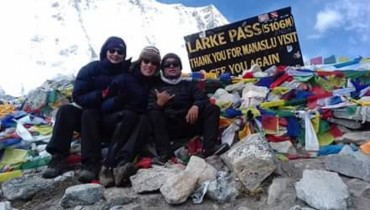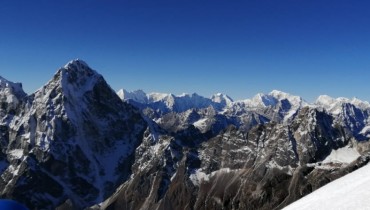Annapurna Base Camp Trek Highlights

Annapurna Base Camp Trek
Annapurna region is the most beautiful and challenging hiking trail in the western part of Nepal. One of the most renowned and well-traveled hiking routes in the Annapurna region is the Annapurna Base Camp trek, also known as the Annapurna sanctuary trek. In the foothills of the Annapurna panorama, where ABC trekking leads you, you can enjoy the unrivaled blessing of being surrounded by untamed nature. The Annapurna base camp trails pass through the largest conservation area in Nepal, (Annapurna Conservation Area Project) where you can experience the diverse flora and fauna.
The main attractions of the Annapurna Base Camp trek are natural beauty, pulsating waterfalls, creeks, breathtaking landscapes, Gurung and Magar ethnic settlements, friendly people and their culture, lush green forest covered in rhododendrons, suspension bridges, downhill and uphill trails, winding rivers, and, most importantly, the mountains peaks like the Annapurna massif, Dhaulagiri, Machapuchhre (Mt. Fishtail), and many more. Beyond these features, ABC Trek provides a lot more. Here, we've attempted to explain a few of ABC Trek's attractions.
Highlights of the Annapurna Base Camp Trek
1) Pokhara
Pokhara is a metropolitan city in Nepal, which serves as the capital of Gandaki Province. It is the second most populous city in Nepal after Kathmandu, with 518,452 inhabitants living in 101,669 households in 2021. It is the country's largest metropolitan city in terms of area. The city also serves as the headquarters of Kaski District. Pokhara is located 200 km (120 miles) west of the capital, Kathmandu. The city is on the shore of Phewa Lake, and sits at an elevation of approximately 822m. The Annapurna Range, with three out of the ten highest peaks in the world—Dhaulagiri, Annapurna-I and Manaslu are within 15–35 mi (24–56 km) could be seen from Pokhara.
Pokhara is considered the tourism capital of Nepal, being a base for trekkers undertaking the Annapurna Base Camp through the Annapurna Conservation Area region of the Annapurna ranges in the Himalayas. The city is also home to many of the elite Gurkha soldiers, soldiers native to South Asia of Nepalese nationality recruited for the British Army, Nepalese Army, Indian Army, Gurkha Contingent Singapore, Gurkha Reserve Unit Brunei, UN peacekeeping forces and in war zones around the world.
Please click here to read another article about Pokhara.

2) Poon Hill Viewpoint
Poon Hill is a hill station overlooking the Annapurna Massif range and Dhaulagiri mountain range, located on the border of Myagdi District and Kaski District in Gandaki Province of Nepal. This viewpoint is one of the key attractions in the Annapurna base camp trek. This viewpoint offers spectacular views of Dhauligiri and Manaslu range and stunning landscapes along with splendid sunrise and sunset over the Annapurna massif. Mountains such as Annapurna-I 8,091m, Dhaulagiri 8,127, Annapurna South 7,219m, Machapuchare 6,993m, Hinchuli, Annapurna-III, Dhampus peak, Dhulagiri-II, and many other tall peaks can be seen from here.
Poon Hill is located 270 km west of Kathmandu. The hike to Poon Hill from Pokhara takes 2–3 days. The Poon Hill viewpoint is on the way to Annapurna Sanctuary which lies in the center of Annapurna Conservation Area.

3) Ghandruk Village
Ghandruk is a Village in the Kaski District of the Gandaki Province of Nepal. Situated at a distance of 32km north-west to Pokhara, the village is readily accessible by public buses and private taxis from the provincial headquarter. It is one of the most well-known and frequented tourist spots in the Annapurna region
Ghandruk is a common place for treks in the Annapurna range of Nepal (Annapurna Base camp and Annapurna Circuit treks, in particular). The peaks of Mt Annapurna, Mt Machapuchare, Gangapurna and Mt Hiunchuli can be seen from the village, and it is also the gateway to Poon hill.
Gurung communities comprise the major inhabitants of the village. In addition, the Gurung communities and their culture, way of life, cuisine, and hospitality play a major role in drawing in large numbers of tourists. By utilizing all of the resources and labor available locally, they are also boosting rural tourism. You can also tour restaurants, courtyards, Buddhist monasteries, Gurung museums, quaint streets, and houses with slate roofs in Ghandruk village. There are several lodging options with breathtaking mountain views, including homestays, restaurants, motels, and cottages that are much superior to the city's top-rated hotels. They provide the best hospitality coupled with high-quality meals, spotless bathrooms, and other conveniences.

4) Jhinu Danda Hot Springs
As it provides a natural hot spring for trekkers and hikers, Jhinu danda hot spring is another well-liked and frequently visited destination in the Annapurna region trek. Built on the banks of the powerful Modi Khola, Jhinu Hot Spring is surrounded by a magnificent alpine forest of rhododendron, oak, and pine trees. Hot water will soothe your muscles after the hike is over and relax your entire body. A once-in-a-lifetime experience would be to immerse your body in a natural hot spring, listen to the sound of the river, and feel the true essence of nature.
5) Dense Forest
The ABC trek's lush forest of rhododendrons, oaks and other alpine plants is one of its most beautiful features. During the spring, magical rhododendron transforms the forest into vibrant panoramas. Along the route to base camp, numerous tea houses that also spruce up their hotels with vibrant flowers and plants welcome visitors with a variety of wildflowers and plants. Rhododendron is one among the many varieties of amazing flowers and plants that can be seen in ABC trip. In addition to this, the Annapurna region is home to a few other unique types of plants and flowers.

6) Annapurna mountain range
Another key draw of the ABC trek is the Annapurna region, a 55km long Himalayan range in western Nepal. The stunning Pokhara valley in the south makes up this extensive mountain range. Annapurna I (8,091m), Annapurna II (7,937m), Annapurna III (7,555m), Annapurna IV (7,525m), Annapurna South (7,219m), Gangapurna (7,455m), and the most recognizable mountain, Mt. Machhapuchhre, are the key mountains of the Annapurna massif that you can encounter from the ABC area (6,993m). Maurice Herzog and Louis Lachenal successfully climbed the first eight-thousander, Annapurna I, in 1950.

Dream Big! Dream Travel!!
Quick Inquiry

Manaslu Circuit Trek - A Complete Guide

Nepal banned solo trekkers throughout the country


